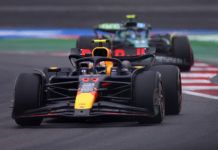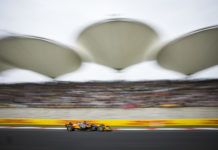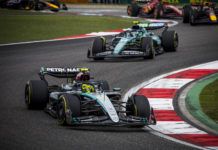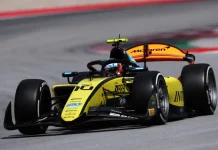Pirelli Motorsport’s Mario Isola welcomes FIA’s steps for cutting downforce for F1 2021 but he feels even without that, tyres would have been safe to run, as he adds on change in testing plans.
The delay of the 2021 F1 regulatory overhaul to 2022 has far-reaching implications of major significance. Not only does it mean teams will have to develop their 2022 cars under the stringent budgetary restrictions, it also means that the 2020 breed of cars will have effectively endured two years of development.
All the while, the F1 tyres have seen few major alterations, and as such they’ve faced more stress than in years prior, as downforce levels – and the subsequent corner speeds – climb at a rapid rate, thereby becoming more demanding of the tyre compound.
To prevent this issue from boiling over, F1 and the FIA have cordoned off a section of the floor near the rear tyres from development, as they are also mandating the simplification as well as the trimming of that floor area, considering it is the 2019 tyres which will be used in 2021 as well, with the cars only going faster.
In essence, this section of the car’s undertray will be reigned in after so many seasons of developmental change. As explained by rule-makers, it was a regulation that is born out of safety concerns, but Pirelli boss Isola denied that there would have otherwise been any risks, as higher pressures would have been an easy remedy if there were any legitimate worries.
Isola avoided starting trouble, but contested that these changes are rather born out of a desire to keep the tyres favorable for drivers and teams. “For me it’s not a matter of safety,” he said. “If we increase the pressure we can compensate for the level of load, the level of stress that you put on the tyres. We did it for Silverstone for the second race.
“Okay, it’s difficult to compare, because in the second race we didn’t have a stint of 37-38 laps. But according to the analysis we made on tyres after the second Silverstone, everything was working well. So the pressure obviously is playing an important part in this equation. The pressure is obviously playing a major part in this, and with the pressure we can support the construction — sustain the construction.
“You have vertical and lateral forces that are acting on tyres, and we can establish a minimum pressure that is different for each circuit and is calculated according to the level of energy that is going into the tyres. It is also clear that increasing the pressure increases the side-effects of high downforce and softer tyres, like overheating and degradation because the compound is more stressed, in some cases also blistering is possible.
“Drivers don’t want that, we don’t want that, so the idea is that limiting the downforce or reducing the downforce for next year will help the situation, will help the tyre because we can run lower pressures. And considering we are using the same product as last year, that is clearly helping the behavior of the car. Reducing the degradation, and allowing the drivers to push a little bit more.
“The FIA decided to cut downforce. And I cannot say that I’m not in agreement. But I don’t want that the message to be that it’s for safety reasons, because we can use the pressure to compensate for the level of load. Obviously, if we consider that from now to the end of 2021 the ability of the teams to develop the cars is huge. We can end up at the end of 2021 with a level of load that is really very high.
“And therefore we are obliged to increase the pressure to where we have again degradation, overheating or blistering at the level that we don’t want, so it’s the right move to do for next year,” summed up Isola. Meanwhile, Pirelli were to test a 2021 tyre compound at Silverstone 2 and Barcelona.
However these tests were cancelled, and Isola explained the logic behind this decision, which has been criticised by some. “We are fine-tuning the current construction for next year, and we are collecting data and trying to better understand what happened in Silverstone in order to supply upgraded prototypes to the teams in the future.
“The plan was to have some test of the prototypes in Silverstone 2 and in Barcelona. We postponed those for two reasons, firstly because we can discuss further steps with the new prototypes and secondly, we have less time pressure because we have an extensive European calendar, so it is also possible to consider races after September for testing.
“This is the plan from our side. We haven’t discussed yet with our R&D department about which circuits are best representative, but I’m not concerned about going to new tracks because in any case we have a baseline in the normal tyres we use for the weekend, so even if we don’t have data before going to these tracks, for sure we will collect it during the weekend and we can [then] make comparisons to the prototypes.
“It is right to say that going tracks like Barcelona – where we have loads of data – is better, but for me it’s best we take a bit of time to rethink, process the prototypes, and do something that is a bigger step in the right direction,” summed up Isola. At the moment, there is no talks about a test during Belgium GP.
Following that is races at Monza, Mugello and Sochi, where Pirelli could test, especially the two regularly used F1 circuits. Post that they have all three new for 2020 with Nurburgring, Algarve and Imola, while nothing beyond that is fixed even though they can run at Bahrain and Abu Dhabi with weather favouring them too.
Here’s last from Pirelli regarding Silverstone case



















